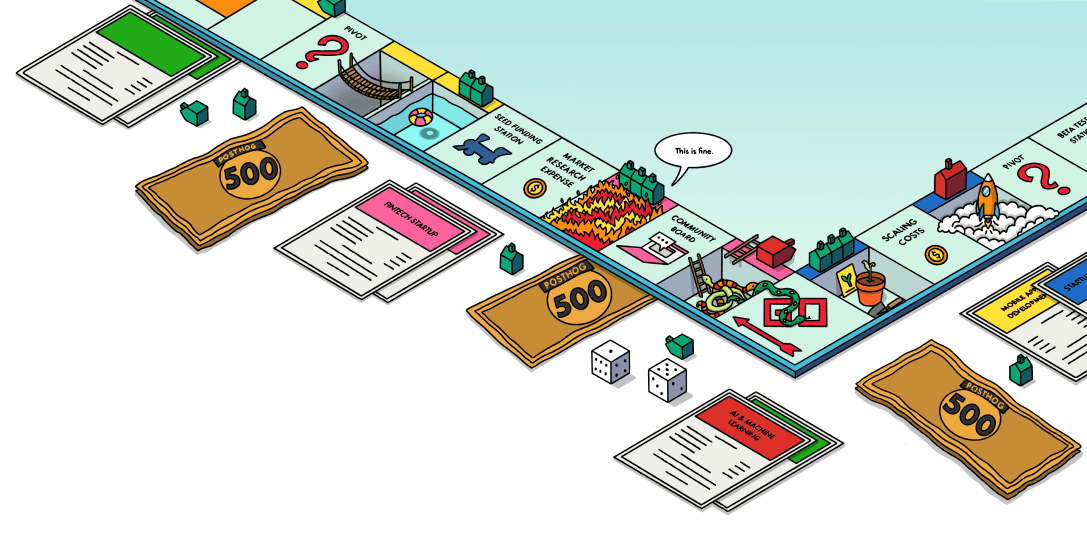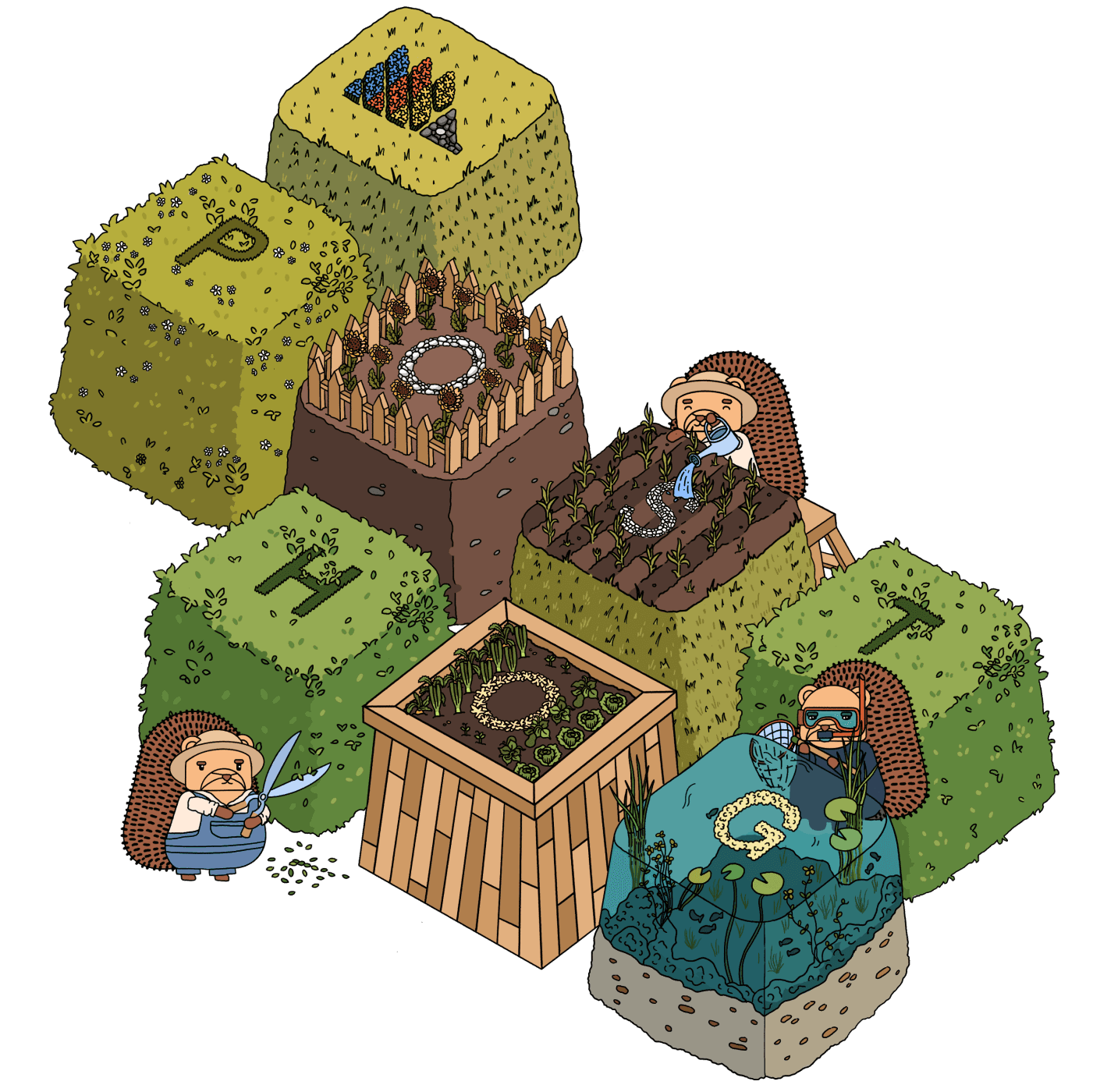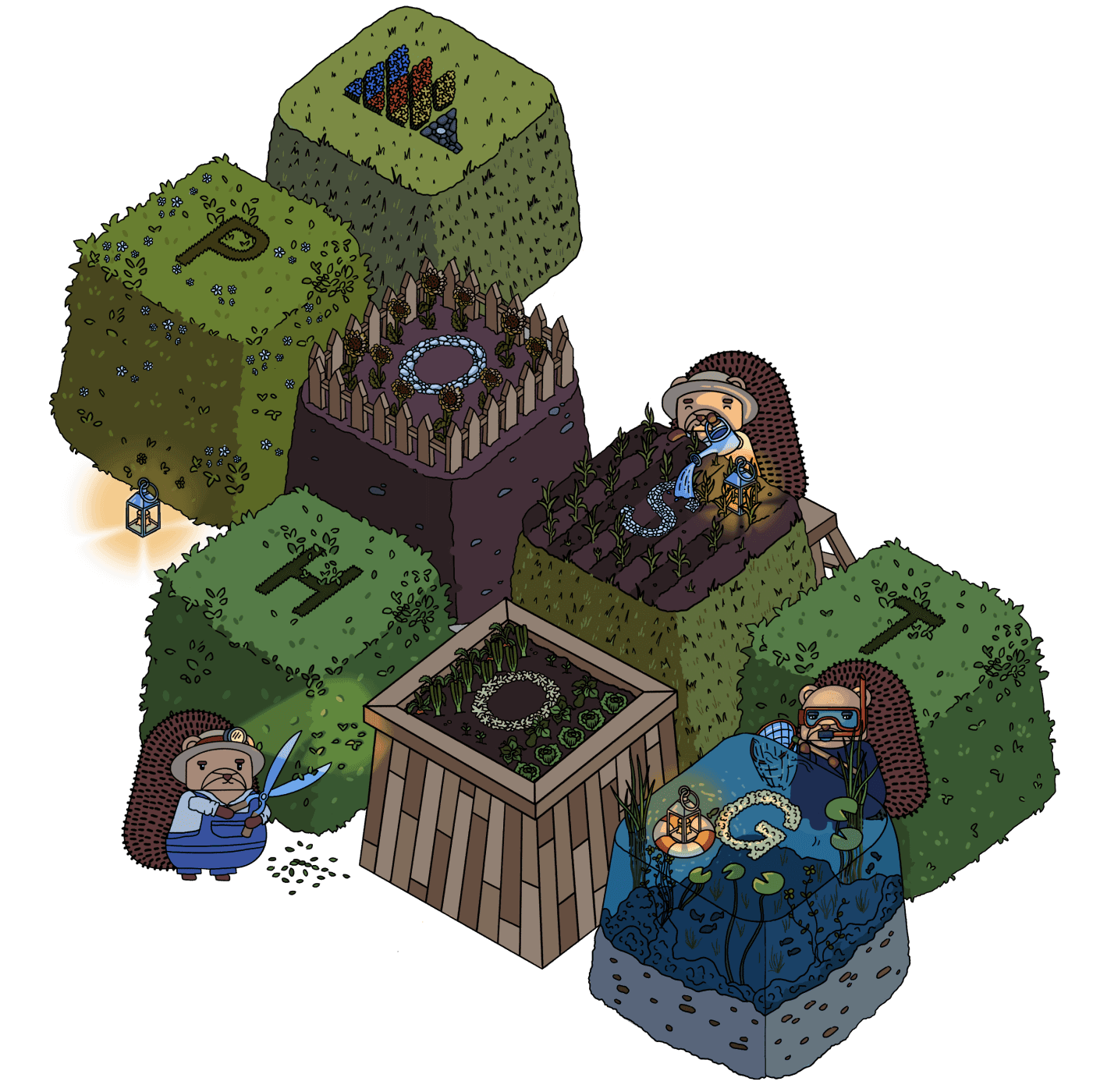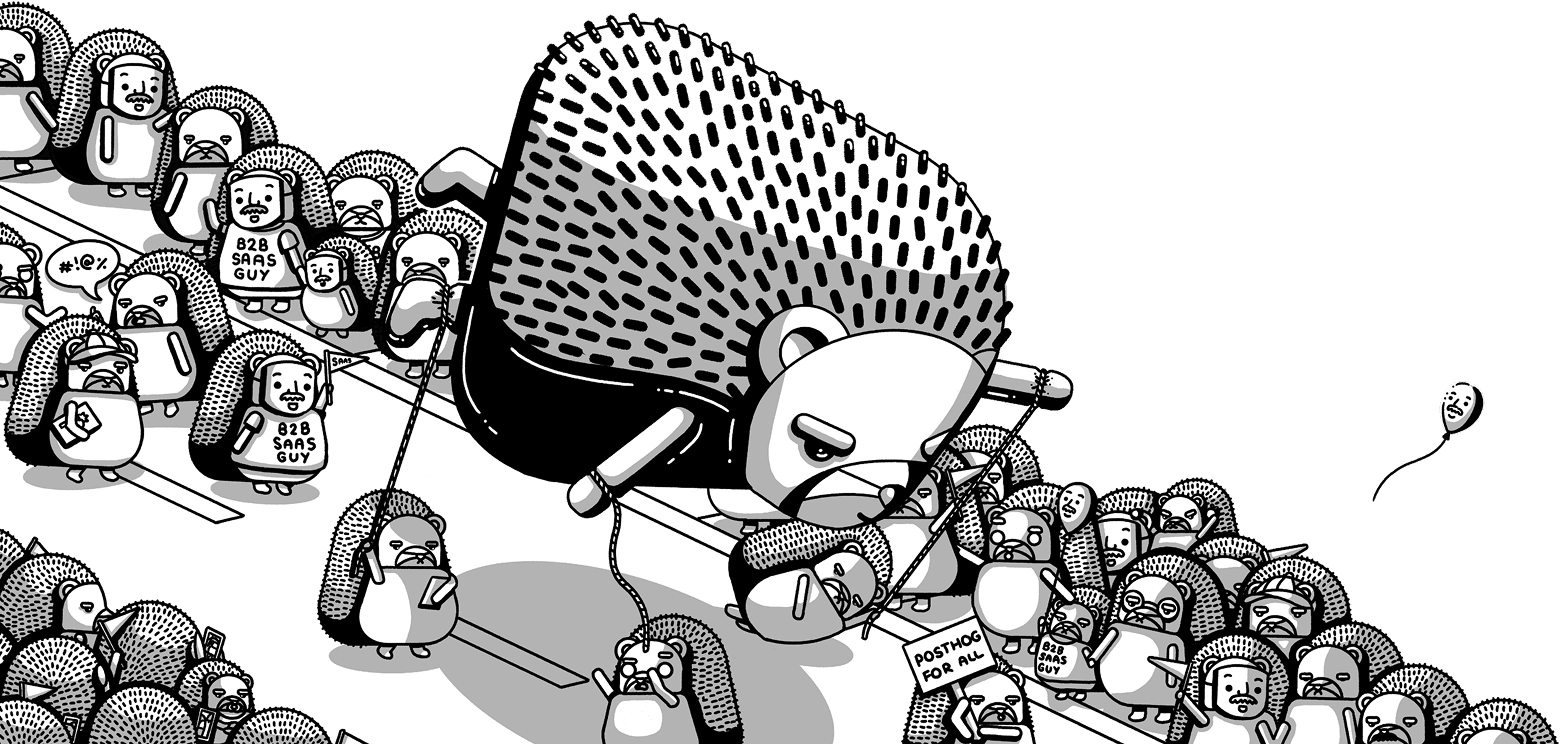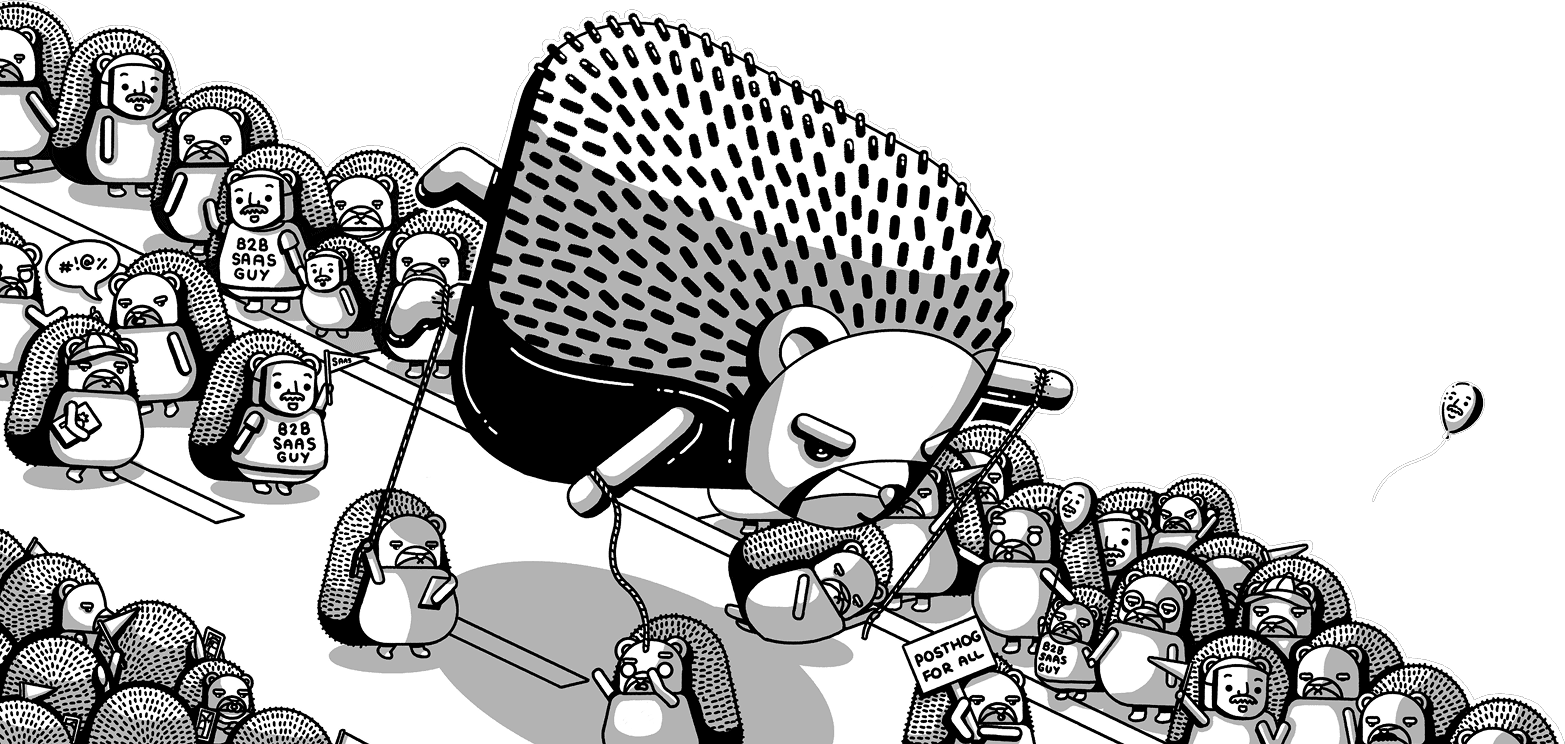
How we do dogfooding at PostHog (with examples)
Contents
Dogfood is not on PostHog's roadmap, but it sure does shape it.
Dogfooding is the process of using your product internally. This helps you to get fast feedback, ship a higher-quality product, and maintain customer empathy.
At PostHog, we dogfood a lot and find it works well because we're our own ideal customer. We build tools for companies that look like ours. Not all companies are in this situation though, meaning dogfooding can lead you in the wrong direction if you aren't careful.
What does dogfooding look like at PostHog?
As a high-growth startup making a tool for high-growth startups, we end up using our product a lot. Dogfooding doesn't just happen with the product we've already built, but also what is in progress too. In this way, it is part of our entire product development process.
To give you an idea of how dogfooding shapes PostHog, here are some examples:
How booking user interviews led to surveys
Our product team found booking user interviews laborious. They needed to identify users, send them emails, and coordinate a time before getting any feedback. Across hundreds of interviews, this takes up a significant amount of time.
To solve this, they decided to leverage our site app functionality to build a popup that used feature flags to target the right users with a button to book a meeting in Calendly.
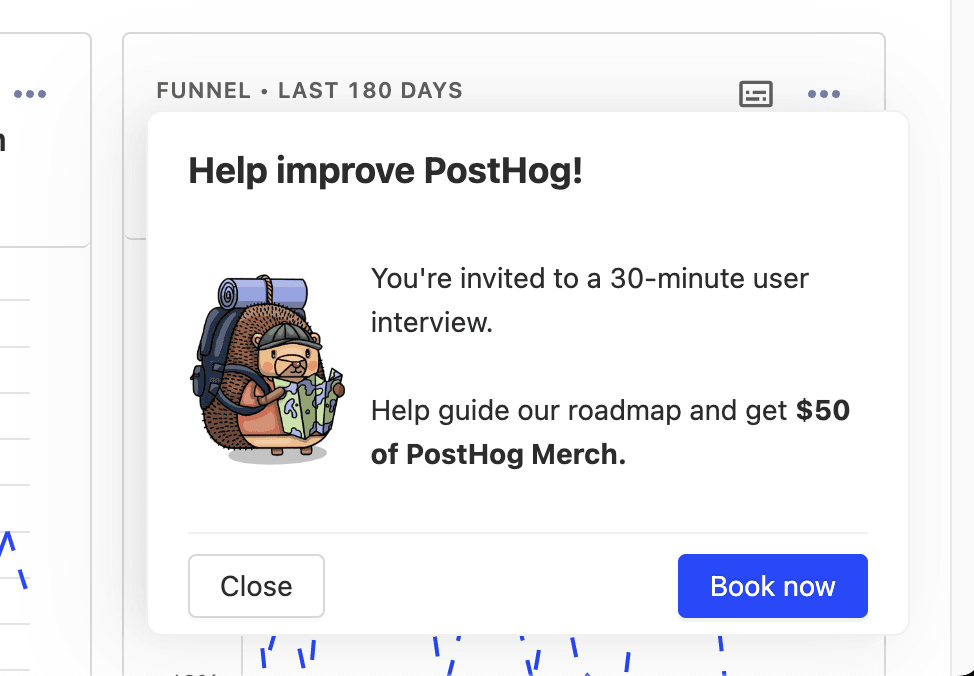
This saved them a massive amount of time while also validating an important use case for what is now surveys. In this way, dogfooding helped us both at that moment and guided our roadmap in the longer term.
HogQL maximalism
For a time, you couldn't query your PostHog data directly with SQL. That changed with HogQL, our version of SQL (and an entire querying service).
The development of HogQL was largely driven by dogfooding for two reasons:
It's advanced. Because HogQL is a tool for power users, it was tougher to get initial adoption. We were the primary ones using it meaning we were the ones finding issues and limitations.
We use it elsewhere. HogQL is now the underlying query engine for all insights. Improvements to functionality and performance we created internally end up benefiting external users too.
For example, HogQL was missing OFFSET support until  Michael Matloka
Michael Matloka Michael Matloka discovered that limitation when wanting to calculate the average number of times a dashboard is viewed.
Michael Matloka discovered that limitation when wanting to calculate the average number of times a dashboard is viewed.

Everyone needs to query external sources
An important part of dogfooding is noticing areas you aren't doing it, but should be. In our case, a key part of our strategy is being the source of truth for product and customer data, but we often needed to rely on non-PostHog tools to do this, not dogfooding our own.
This was the inspiration behind the data warehouse, which provides the ability to link and query data from external sources like Stripe, Hubspot, Zendesk. This enables to dogfood our own solution instead of relying on an external one.
Dogfooding has been critical for its development. Functionality has been guided by the queries of our sales and product teams, and a majority of feedback about issues and usability came from internal teams during alpha.

The benefits of dogfooding
We dogfood a lot, but what do we actually get out of it?
Fast feedback. Getting feedback from your teammates is a lot easier and faster than getting it from users. This guides product development and helps you iterate rapidly.
Reveals issues and bugs. When we dogfood, we almost always discover usability issues or bugs that we can fix before they impact user experience. This helps you ship a polished product.
Increases product knowledge. Our whole team uses PostHog. This helps us fix cross-functional issues, discover use cases, and promote PostHog better.
Spirit. If your product is good, it helps your team become confident in it. If your product is bad, it motivates the team to make it better. As a dramatic example of this, Apple banned typewriters. They were either going to manifest the future of computing or die trying.

How to dogfood well
From our experiences with dogfooding, we've learned a bit about how to do it well. Importantly, we've created a culture where dogfooding is expected and encouraged. We've also put into place the tools and processes that help us get good feedback and act on it, improving our product.
Doing this yourself is a two-step process:
1. Create a culture of dogfooding
A hot take: forcing your team to dogfood your product is a bad sign. This means there is a fundamental mismatch between the work your team wants to do and the product you are building. There are a few potential reasons for this:
- Your team isn't the ideal user for your product.
- Your product isn't good enough for your team to use.
- You haven't created the right culture to support dogfooding.
The first two are major problems beyond the focus of this article (they require a rethinking of your entire strategy). The third is the most common and fixable.
To create a culture of dogfooding, first, you need buy-in from the top. The responsibility to dogfood does not belong to one person or team. The entire organization needs to be bought into using the product, providing feedback, and continuously improving the product.
Everyone at PostHog, from the cofounders to the marketing team, uses PostHog and provides feedback on their usage.
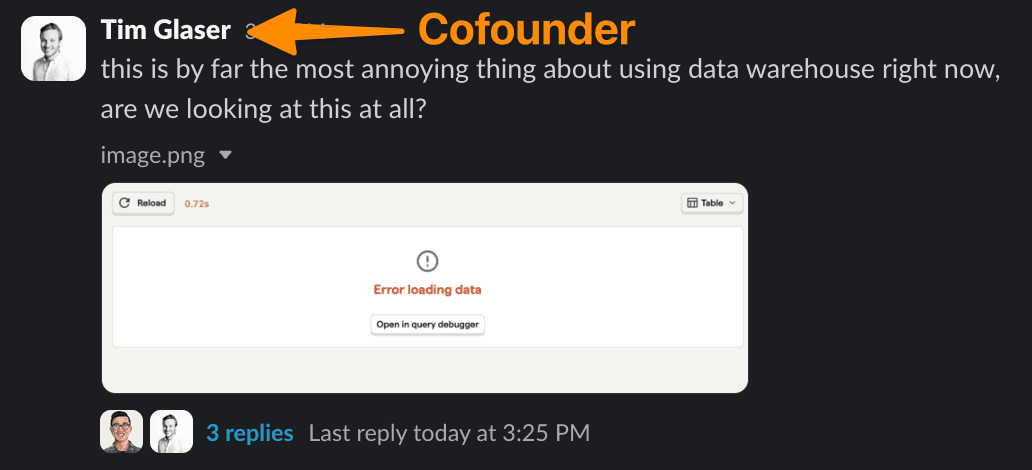
Feedback is critical to the dogfooding process and to make people comfortable with giving feedback, you need trust. Your team must trust each other to give and receive feedback. Assume positive intent, acknowledge it, and do with it what you want. This might be uncomfortable, but dogfooding doesn't work without it.
2. Implement dogfooding into product development
After creating the culture to support dogfooding, it must be integrated into your process for improving your product. When done right, it can have an impact on multiple stages from ideation to testing to post-release.
We've found three details are key to getting the most out of dogfooding:
Treat your team like a customer. Interview them, ask them for feedback on what you built, use this to guide your next iteration, and repeat. For the best results, go out of your way to ask for feedback and make your ask specific.
Create tighter feedback loops. At PostHog, we have product engineers who take full ownership of a product. They both figure out what to build and build it. This means they dogfood and can implement the improvements from dogfooding, iterating rapidly. If you never action feedback, your dogfooding is going to waste.
Separate deployment from release. Doing this enables you to dogfood a change without releasing it to all your users. Using feature flags, you can test in production, fix issues, and ship a polished product to users.
The pitfalls of dogfooding
Dogfooding too much can cause you to think you are building what users want, but really only build what you want. To ensure this doesn't happen, here are some pitfalls to avoid:
Dogfooding as a silver bullet. Dogfooding shouldn't be the only strategy you use to develop your product. Your goal should be to build something your users want, not just yourself. To do this, talk to users, research your industry and competitors, build, get feedback, and iterate.
Overly dogfooding. Dogfooding too much can slow you down and cause you to focus on small fixes. You must be comfortable with shipping big features before they are fully ready because real-world feedback is what really matters.
Biases. Your team is (hopefully) a tiny portion of users representing a small portion of use cases. Relying on dogfooding can bias you towards these use cases and limit the full potential of your product. Not everyone is an engineer building in B2B SaaS.
If you decide that dogfooding is right for you and manage to avoid the pitfalls listed here, you've unlocked a superpower for getting fast feedback and building a better product. We know this because we've heavily relied on it and recommend leveraging it when possible.

